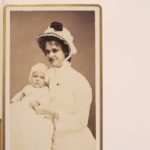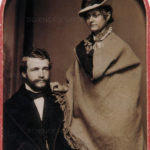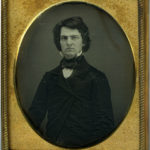I’ve written previously about what it’s meant to my understanding of Mabel, Millicent and Emily to do some “footstepping” – to walk in their paths, see and experience some of the places they did. It’s helped to envision their worlds, to get inside of their heads. I recently experienced this again when my family and I traveled to Peru.
In 1907, Mabel and David traveled to South America on yet another eclipse expedition. They left aboard the SS Panama, traveling to Cuba, through what would become the Panama Canal into Panama, Ecuador, Peru and Chile in May of that year. Millicent, teaching at Wellesley College, was not able to leave during the semester and so traveled by herself to join her parents in Peru – a remarkable thing for a young woman of 27 to do at the time, especially given the long journey by boat, rail and carriage it took to get there.
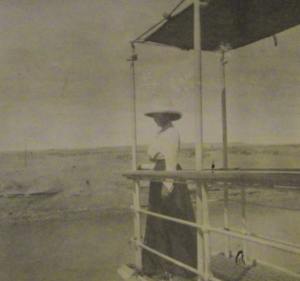
The 1907 expedition was the second one financed by wealthy mill magnate turned astronomer, Percival Lowell. David spent months on his calculations and arranged to ship the new Clark refractor telescope from Amherst College all the way to South America. Mabel and Millicent both took Spanish lessons in preparation for the journey.
For Mabel, the most significant moments of the expedition included seeing both the incredible poverty of Ecuador, more extreme than anything she’d ever viewed, and the spectacular scenery of Peru. She wrote that the landscape “affects me much as I suppose a trip on the moon might do, so unearthly, so foreign to any land or country I ever saw before or imagined. It is like dreams, or strange thoughts at most weird moments. High above where mountains could be imagined, rise sterile and terrifying peaks, range upon range, half hidden in cloud, and emerging here & there with forbidding effect, massive, stern, grand, awful in their deathlike loneliness, blue atmospheric softening, yet showing through it shadows and crevices the fearful caves and magnificent glaciers…”
Mabel spent much time on this trip riding on horseback (“it would be of no use to anybody to come to South America who did not ride” she noted along the way), and traveled on a train high in the Andes – the highest railway in the world at that time. She also gave an address before the Geographical Society of Peru, becoming the first woman ever to address that group.
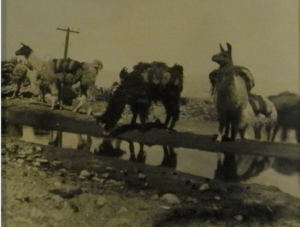
Millicent recorded her journey in great detail in a journal she later typed up (150 pages’ worth). Most of her comments were not only about the sights she saw, but also about her observations of differences in race and class. Unlike Mabel, who was passionate about trying to paint a picture in words, Millicent waxed far more practical in what she chose to record. It’s not as though she didn’t see the poetry of nature – she just didn’t feel the need or believe she had the ability to capture it. To wit, upon seeing an incredible sunset in Peru, which she suggested was one of the most beautiful things she’d ever seen, she wrote, “I don’t try to describe these sunsets for several reasons – (1) I shall remember every color to my dying day, (2) they change instant by instant, (3) they are entirely different in different parts of the horizon (4) they are different every night (5) I can’t.”
But that doesn’t mean that even practically- minded Millicent couldn’t also be philosophical or poetic, at least on occasion. After describing a trek she had taken with David up 17,000 foot Mt. Meiggs, (described today as “where the Andes glaciers meet the sky”), Millicent was awed.
Peru moved Millicent in ways she didn’t realize at the time. Its rugged and contrasting geography would become the topic of her 1923 doctoral dissertation at Harvard, “An Investigation of Geographic Controls in Peru,” and was, as well, the subject of her book Peru, A Land of Contrasts, published in 1917. “Any statement regarding Peru implies a contrary statement equally valid,” she wrote. “Contrast is its characteristic quality, true as to the general aspects of the country and ramifying through remote details. It is the obvious point of view from which to study Peru…To the charm of limitless nature is added the mystery of great peoples destroyed before they were known. The riches of the Incas and of the glittery, vice-regal Spanish days, when continents were found, taken, and explored, contrast with present poverty. Contrasts of nature, of people to country, of antiquity to the present – these diverse elements are insistent wherever one turns.”
Having now been to Peru, I understand why it was that Millicent found the geography there so compelling. It really is a land of contrasts: enormous snow-capped peaks, verdant fields, cacti alongside bromeliads and other tropical plants, ancient terraces cut into the mountainsides, cloud forests, jagged rocky expanses, glacial plateaus. In her travel journal Millicent marveled, “You may go up 17,000 feet to the region of eternal snow. Your mules may drop beneath you with the cold and deadly lack of atmosphere. Still the glaciers crawl down upon you from peaks towering thousands of feet above, where no human foot has ever trod, no living heart ever throbbed. The rocks are jaggeder here and you feel as if the rough places of this earth had been turned up to where they could brush against the sky.”
Of course Millicent was a little wrong about that: human feet had indeed trodden there before. The Todds were in Peru shortly before Yale professor and explorer Hiram Bingham (no relation to Walter Van Dyke Bingham) “discovered” Machu Picchu. (Bingham’s legacy in Peru is a checkered one, to say the least. Contemporary writers in anthropology, archaeology, history and politics now generally acknowledge that while Westerners might not have known about the amazing ruins, the people who lived there certainly did; Machu Picchu was a part of the Peruvian people’s culture and their lives). The Todds saw and were amazed by many of the other Inca ruins throughout the country. The ruins are unmistakable evidence that well before the Spanish or any other Western culture set foot on this land, Peru was occupied by cultures who found ways of not only taming this remarkable landscape, but of understanding it.
For me, the highlight of our trip was the trek up the Inca Trail to Machu Picchu. Other than childbirth, this was unquestionably the most rigorous physical experience I have ever had. Our guide kept encouraging us along the way, telling us that this was a pilgrimage. When, at the end of 7 hours of arduous hiking, much of it up vertical ascents on ancient stone steps the Incas carved into the mountainside, we saw the “Sun Gate” glowing in the afternoon light and knew that the ruins of Machu Picchu lay just beyond, I felt inspired to go the rest of the way. I knew our guide was right: this WAS a pilgrimage. I’m sorry it’s one that Mabel, David and Millicent didn’t know about, because it would have been as meaningful an experience for them as it was for me and my family.

As we traveled elsewhere in Peru, I found myself thinking of the Todds, a lot. I felt like I was again footstepping. I better understood them in truly visceral ways.
Interestingly, in the middle of Millicent’s South American travel journal she pondered, “I wonder if hearing this journal will ever give a wider horizon to anybody, will show somebody that if they have tried and failed there are chances elsewhere. Or if, perhaps, it might inspire somebody to think of other worlds than those that have become humdrum through too long familiarity?”
You know, Millicent, it has.


